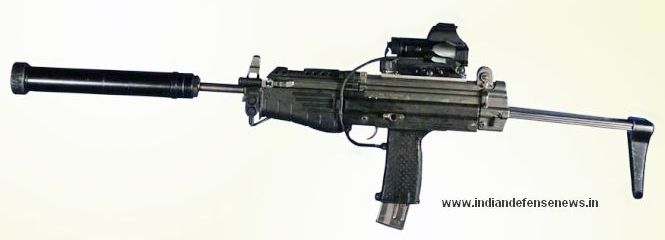- Joined
- May 26, 2010
- Messages
- 31,122
- Likes
- 41,041
I have added a photo in my previous post for better understanding ..
I saw American rifles brass hitting their fellow soldiers. Proude of INSAS which has solved the problem.1B1 throw out casing 45 degree angle, It does not hit other solider at his side ..
Brass catcher is important to make sure no of rounds fired and also to avoid people ( Army as well as Civilians ) from stealing brass and sell it in market or keep it as personal item, Such measures avoids unnecessary troubles ..
Brass catchers are used in training, Firing ranges and in exercise not in combat ..

Source : http://archive.indianexpress.com/oldStory/77704/Intensive tests on INSAS rifle, the Indian Army’s mainstay, have confirmed its “robustness and reliability” even in “intense operational scenarios.”
The result of the tests, conducted at Mhow between August 18 and 20, would be communicated to Kathmandu, which had complained about the rifle’s “unreliability” and blamed it for the reverses it suffered against the Maoists.
The Army’s Infantry School in Mhow tested 44 INSAS rifles of the Platoon Weapons Division, simulating an “intense operational scenario.” The rifles were put through alternative tests of short-burst firing and single-shot firing.
The report of the tests says the rate of fire and performance during high cyclic load was “acceptable”. A total of 12,237 rounds were fired. The total number of “stoppages” — where rounds get jammed during continuous use — was under one per cent, a vindication of the Army’s stand, since the international norm for small arms is two per cent.
The report says out of 44 rifles, only 15 faced stoppages, and only three more than eight stoppages. Barring the three, the average stoppage was only 0.66 per cent, the report adds.
Apart from stoppages, the test team in Mhow, which included one JCO and four Havildar-rank instructors, encountered “no breakages or defects with the INSAS rifle”, as claimed by the Royal Nepalese Army (RNA). The RNA had complained that the INSAS it used broke down during fighting, which resulted in some of its men falling to the Maoists’ bullets. The rifles were operated for 30 minutes at a stretch, simulating the scenario in which the RNA operates.
Army Chief Gen J J Singh had last month backed the rifle at the Infantry Commanders’ Conference in Mhow.











----------------------------
Are these the new helmets for which deal was recently inked?
1B1 with zess red dots including LMG ..
Are these the new helmets for which deal was recently inked?
are these zeiss sights becoming standard on insas throughout the army or some troops only?
1B1 with zess red dots including LMG ..


are these zeiss sights becoming standard on insas throughout the army or some troops only?






| Thread starter | Similar threads | Forum | Replies | Date |
|---|---|---|---|---|
|
|
'It's Good': When US Soldiers Fired INSAS Rifle In Joint Military Drill | Indian Army | 1 | |
|
|
Exclusive: Made in India rifles to replace INSAS | Indian Army | 90 | |
|
|
Insas Excalibur 5.56mm Assault Rifle 3d Art | Military Multimedia | 2 | |
|
|
Regarding replacement of INSAS Rifle | Indian Army | 2 |
